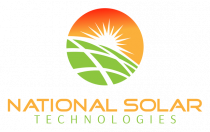Emerging Technologies in the Solar Industry 2025 and How to Capitalize on Market Opportunities
As the world pivots towards sustainable energy solutions, the Solar Industry stands at the forefront of technological innovation and market potential. With projections indicating significant advancements by 2025, emerging technologies are poised to revolutionize the way we harness solar power. From enhanced photovoltaic cells to innovative energy storage systems, these technologies represent not only a response to global energy demands but also an opportunity for investors and entrepreneurs eager to capitalize on a rapidly evolving marketplace. In this blog, we will explore the latest breakthroughs in solar technology and provide insights into how businesses can navigate this dynamic landscape for growth and success. As we delve into the promising horizon of the Solar Industry, we invite you to join us on a journey that highlights the immense possibilities that lie ahead for those willing to seize the moment.

Technological Innovations Revolutionizing Solar Energy Production by 2025
Technological innovations are set to revolutionize solar energy production by 2025, paving the way for a more efficient, sustainable, and accessible energy future. Advanced photovoltaic cells, such as perovskite solar cells, are rapidly gaining traction due to their superior efficiency and lower production costs compared to traditional silicon cells. These cutting-edge materials not only promise to boost the energy conversion rate but also open avenues for flexible and lightweight solar applications, making solar energy more adaptable for various environments and usages.
In addition to improvements in solar cell technology, energy storage solutions are also experiencing significant advancements. The integration of more efficient batteries, such as solid-state and flow batteries, will enhance the reliability and stability of solar energy systems. These innovations allow for better energy management, enabling users to store excess solar power for use during non-sunny hours, thereby maximizing energy utilization. As the solar industry evolves, businesses and consumers alike will find new opportunities to invest in and adopt these emerging technologies, driving further growth in the renewable energy sector.
Key Market Trends Driving Growth in the Solar Industry and Investment Strategies
As the solar industry continues to evolve, several key market trends are driving growth and presenting lucrative investment opportunities. One of the most significant trends is the increasing demand for renewable energy sources, spurred by government initiatives aimed at reducing carbon emissions. With countries worldwide committing to ambitious climate goals, the solar market is experiencing a surge in new installations and innovations. Investors should focus on companies that are leveraging advancements in technology, such as high-efficiency solar panels and energy storage solutions, which are crucial for enhancing energy output and reliability.
Another prominent trend is the decentralization of energy production. As more homeowners and businesses opt for solar installations, the concept of microgrids—localized energy systems that can operate independently from the main grid—is rapidly gaining traction. This shift not only empowers consumers but also opens doors for investments in software and hardware that facilitate smart grid technologies. Additionally, the rise of electric vehicles creates a symbiotic relationship with solar energy, as charging stations powered by solar can decrease dependency on traditional energy sources. Investors keen on capitalizing on these market dynamics should actively seek out companies that are positioned at the intersection of solar energy and emerging technologies.
Market Share of Emerging Solar Technologies in 2025
This pie chart illustrates the market share distribution of various emerging technologies in the solar industry for the year 2025. The data highlights key areas of growth and investment opportunities within the sector.
The Role of Artificial Intelligence and Machine Learning in Solar Efficiency Enhancements
The advancement of artificial intelligence (AI) and machine learning (ML) is revolutionizing the solar industry, paving the way for enhanced efficiency and reduced operational costs. By analyzing extensive data sets, AI algorithms can optimize solar panel placements, ensuring they receive maximum sunlight exposure throughout the day. Machine learning models also play a critical role in predicting energy production based on weather patterns, helping solar operators make informed decisions about energy distribution and storage.
Moreover, AI-driven predictive maintenance systems are increasingly becoming part of solar energy management. These systems can identify potential malfunctions in solar panels and equipment before they occur, minimizing downtime and extending the lifespan of assets. By leveraging historical performance data, machine learning techniques can provide actionable insights, enabling operators to maximize output and improve return on investment. As these technologies continue to evolve, they present substantial market opportunities for businesses willing to invest in innovative solar solutions.
Emerging Technologies in the Solar Industry 2025 and How to Capitalize on Market Opportunities
| Technology | Description | Potential Benefits | Market Opportunity | AI & ML Role |
|---|---|---|---|---|
| Bifacial Solar Panels | Solar panels that can capture sunlight on both sides. | Increased energy production, better land use. | Growing demand for energy efficiency. | Analyzing shadow effects and optimizing angles. |
| Smart Inverters | Advanced inverters that optimize solar energy conversion. | Improved grid integration, energy management. | Regulatory incentives for smart grid solutions. | Predictive maintenance and performance forecasting. |
| Floating Solar Farms | Solar panels installed on bodies of water. | Reduced land use, lower water evaporation rates. | Opportunity in areas with limited space for land-based systems. | Real-time data analytics for water and environmental conditions. |
| Solar Skins and Nanotechnology | Innovative materials for enhanced solar absorption. | Higher efficiency and reduced production costs. | Expanding markets in residential solar. | Machine learning for material optimization. |
| Energy Storage Systems | Batteries and systems for storing solar energy. | Enhanced reliability and energy availability. | High demand for off-grid and backup solutions. | AI optimization for energy flow and usage. |
Evaluating the Impact of Government Policies on Solar Market Dynamics
As the solar industry evolves, government policies play a pivotal role in shaping market dynamics. In 2025, expected changes in regulations, incentives, and tariffs will significantly influence the growth trajectory of solar technology adoption. For instance, governments worldwide are likely to implement more aggressive tax credits and subsidies for solar projects, encouraging higher installation rates among both commercial and residential sectors. This financial support can alleviate the initial cost barrier for many consumers, making solar energy more accessible than ever.
Furthermore, international policies addressing climate change and promoting renewable energy can open up new market opportunities. Trade agreements that favor solar technology deployment and research funding for innovative solar solutions can create a fertile ground for emerging technologies. Solar businesses must navigate these policy landscapes strategically, aligning their strategies with government initiatives to maximize their competitive advantage. By closely monitoring policy shifts and actively engaging with local and national lawmakers, companies can not only respond to changes but also anticipate and capitalize on emerging trends in the solar market.

Emerging Solar Materials: Increasing Efficiency and Reducing Costs for 2025 and Beyond
Emerging solar materials, particularly perovskite solar cells, are poised to significantly enhance efficiency and reduce costs in the solar industry by 2025 and beyond. According to recent reports, perovskite technology could enable solar panels to reach higher efficiencies than traditional silicon-based cells, while also slashing production costs. This transformative potential highlights a critical opportunity for stakeholders looking to invest in next-generation solar technologies, which are expected to dominate the market landscape as we approach 2040.
In addition to perovskite advancements, the solar industry is witnessing the rise of thin-film solar technologies, which continue to capture market interest due to their lightweight and flexible characteristics. As global investments in solar energy surge, market analysts project a significant increase in adoption rates, spurred by innovations such as PERC technology that reduces energy loss. These developments underscore the necessity for industry participants to harness these emerging materials and technologies effectively to ensure competitiveness in an evolving energy landscape. By capitalizing on these innovations, companies can better position themselves to meet the growing demand for sustainable energy solutions.


